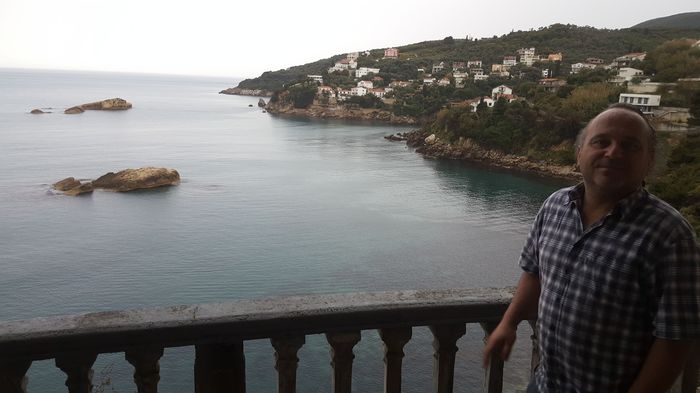Thus the political history of the fourteenth and fifteenth centuries is a record of bloodshed and anarchy, until men like the grim Louis xi., Ferdinand v. and Charles v., and the Tudors in England finally succeeded in mastering Feudalism by the aid of the middle classes and middle- class statesmen. But, as neither middle class nor middle- class statesmen existed in the thirteenth century, the kings were forced to do the best they could with their feudal resources. What they did was often very good, and sometimes truly wonderful. It could not permanently succeed; but its very failure was a grand experiment. And thus, whether in the spiritual and intellectual world, or in the political and social world, the thirteenth century — the last great effort of the Middle Ages—was doomed to inevitable disappointment, because the preceding thousand years of history had deprived it of the only means by which success was possible.
The unmistakable sign that the real force of Catholicism was exhausted may be read in the transfer of the intellectual leadership from the monasteries to the schools, from the churchmen to the doctors. And this transfer was thoroughly effected in the thirteenth century. In the eleventh and twelfth centuries the spiritual and philosophic guidance of mankind was in the hands of true monks. Clugny, Clairvaux, St. Denis, Bee, Canterbury, Merton, Malmesbury, Glastonbury, and Croyland sent out teachers and rulers. St. Bernard managed to silence Abailard. But in the thirteenth century it is not the monasteries but the universities that hold up the torch. Paris, Oxford, Montpellier, and the like were wholly secular schools; for though the leading doctors and professors of this age are still nominally churchmen, and even monks, their whole moral and mental attitude, and the atmosphere of their schools, are strictly secular, and not monastic sofia daily tours.
Dominican and Franciscan houses
Within two generations the Dominican and Franciscan houses, founded at the beginning of the century in such a whirlwind of ecstatic devotion, became celebrated schools of learning and secular education, so that Aquinas has almost as little of the missionary passion of St. Dominic as Roger Bacon has of the mystic tenderness of St. Francis. It is a fact of deep significance that, within a generation of the foundation of the Mendicant Orders, the Descartes and the Bacon of the thirteenth century were both on the roll of the Friars. So rapidly did mystic theology tend to develop into free inquiry. It would be hard to find anything more utterly unlike the saintly ideal of monasticism than were Paris and Oxford at the end of the thirteenth century. Its whole intellectual character may be measured by the light of these two famous seminaries of the new thought.
It was the great age of the schools we call universities, for though those of Italy belong to an earlier age, the thirteenth century gave full stature to the universities of Paris, and of Oxford, of Orleans, Toulouse, and Montpellier, of Cordova, Seville, and Toledo. That of Paris received from Philip Augustus in 1215 (the year of our Great Charter) her formal constitution, and all through the thirteenth century her ‘nations’ of twenty thousand students formed the main intellectual centre of Europe. The University of Oxford was hardly second to that of Paris; and though the history of the Oxford schools is in its origin obscure, and even local, in the thirteenth century we can trace the definite constitution of the university and the momentous foundation of the colleges, when Walter de Merton, in the reign of Edward 1., gave statutes to Merton College. Thus the origin of our great English university is almost exactly coeval with the origin of our English Parliament.
The same age also witnessed the revival of rational philosophy after its long sleep of a thousand years. Intellects quite as powerful as those of the Greek thinkers took up the task of constructing a harmony of general ideas on the ground where it had been left by the Alexandrine successors of Aristotle and Plato. The best teachers of the thirteenth century had conceptions and aims very far broader and more real than those of Abailard, of William of Champeaux, or John of Salisbury in the twelfth century, who were little more than theological logicians.
The thirteenth century had an instrument of its own, at least as important to human progress as the classical revival of the fifteenth century. This was the recovery in substance of the works of Aristotle. By the middle of the thirteenth century the entire works of Aristotle were more or less sufficiently known. For the most part they were translated from the Arabic, where they had lain hid for six centuries, like papyri discovered in an Egyptian mummy case. They were made known by Alexander Hales at Paris, by Albert the Great and Aquinas, his pupil and successor.
Albert of Cologne, the ‘Universal Doctor,’ as they called him, might himself, by virtue of his encyclopaedic method, be styled the Aristotle of the thirteenth century, as St. Bonaventura, the ‘Seraphic Doctor,’ the mystical metaphysician, may be called the Plato of the thirteenth century. Roger Bacon, the Oxford Franciscan, is even yet but imperfectly known to us, though he is often compared, not unfavorably, with his famous namesake, the author of the Novimt Organum. But, in spite of the amazing ingenuity of the founder of natural philosophy in modern Europe, we can hardly hesitate to place above all his contemporaries — the ‘ Angelic Doctor,’ Thomas Aquinas, the Descartes of the thirteenth century, and beyond doubt the greatest philosophic mind between Aristotle and Descartes.
